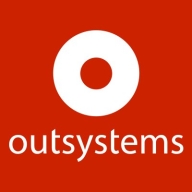

IBM MobileFirst and OutSystems are products in the realm of mobile app development platforms. While OutSystems offers comprehensive features that justify its higher pricing, IBM MobileFirst is favored for its support and affordability.
Features: IBM MobileFirst provides robust security measures, integration with existing enterprise systems, and offers reliability for businesses focused on security and compatibility. OutSystems stands out with rapid development capabilities, a large array of pre-built templates and components, and expansive development tools for diverse scenarios.
Ease of Deployment and Customer Service: IBM MobileFirst offers a flexible deployment model with strong on-premise and cloud support, praised for prompt customer service. OutSystems simplifies deployment with a modern cloud-native approach, providing broader accessibility and flexibility for a more efficient experience.
Pricing and ROI: IBM MobileFirst is noted for competitive setup costs, offering value for businesses prioritizing security and compatibility. OutSystems requires a larger upfront investment but yields higher ROI through enhanced productivity and reduced development times.
| Product | Market Share (%) |
|---|---|
| OutSystems | 16.1% |
| IBM MobileFirst | 2.5% |
| Other | 81.4% |

| Company Size | Count |
|---|---|
| Small Business | 18 |
| Midsize Enterprise | 7 |
| Large Enterprise | 29 |
OutSystems is a platform for low-code application development that unites design, code, and deployment to simplify development so any business can create innovative solutions in a timely manner. There are various use cases an organization can employ with OutSystems, including:
OutSystems offers faster development and deployment times than hand-coding while delivering unique and personalized solutions to its customers. The main focus of OutSystems is high-performance low code which enables businesses to create functional products that answer their needs. It offers clients the ability to develop enterprise-grade applications with a high level of security.
The product stands out from its competitors as it offers:
It ensures its clients that the applications built using this platform are as scalable as hand-coded ones while increasing workspace productivity and evolving applications’ capabilities.
OutSystems Features
OutSystems has various features through which users can develop and deploy highly efficient applications and other products. Some of the features include:
OutSystems Benefits
The solution offers a wide array of benefits to companies that utilize it in their application development. Some of these benefits include:
Reviews from Real Users
Harikrishnan R., a technical lead at Netlink Software Group America Inc, likes OutSystems because the tool helps with validation, offers good features, and is reliable.
An owner at a consultancy thinks OutSystems is versatile with great scalability and great technical support.
We monitor all Mobile Development Platforms reviews to prevent fraudulent reviews and keep review quality high. We do not post reviews by company employees or direct competitors. We validate each review for authenticity via cross-reference with LinkedIn, and personal follow-up with the reviewer when necessary.